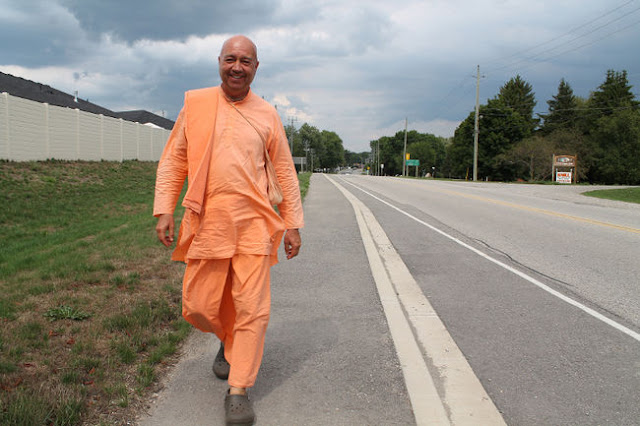After a full day at Disneyland followed by a twelve hour airplane flight, I feel I have come several steps closer to self-realization. I think I finally comprehend how entertainment actually works – and this clarifies my understanding of how time works in three phases: past, present and future; which ties in with my understanding of how the three guṇa (sattva, rajas, and tamas) work; and, ultimately, how consciousness itself works.
This is what I learned…
Entertainment entertains by absorbing our attention. A thrilling roller coaster or a slapstick cartoon, a horror movie or sex, a sad song, good meal, or a bottle of beer – all forms of entertainment work by absorbing our consciousness in the present, allowing us to forget our past and future. All sorts of entertainment, from horror to romance, produce the same effect (pleasure) using the same technique (absorbing our attention in the now).
It’s not the entertainment itself we enjoy, its the effect of entertainment – absorption in the present and forgetting the past and future. That’s why there are countless different genres of entertainment, but they all produce the same effect – pleasure.
The exact form of the entertainment is important only in terms of how well it absorbs our mind in the now. The better the entertainment, the more thoroughly we forget our timeline.
What’s Wrong with The Past and Future?
The past and future are stressful because they involve work, and result from needs. These needs arise from a malfunction in our orientation towards reality. The “malfunction” is that we do not turn our attention towards the effortless joy naturally present in existence itself. Instead we feel empty, unsatisfied and needy, and begin to search for joy elsewhere. Ironically, we forfeit our ever-present inherent joy, to go out hunting for the same thing.
This hunt creates the past and future – two modifications of the present. Reality is called sattva, the present. The two modifications of sattva are called rajas and tamas. They generate a sense of future and past.
Rajas allows consciousness to conceive of “the future,” a phase of reality that contains plans for things we want to acquire, create, build, and so on. Rajas and the future are associated with hard work and anxiety.
Tamas allows consciousness to conceive of “the past,” a modification of reality that contains references to things that have been destroyed or lost. Tamas and the past are experienced via anger and grief.
So, rajas and tamas are not enjoyable, they are stressful and depressing. Entertainment works by liberating us, if only temporarily, from our connection to them.
What’s Special About the Present?
The present is the object directly experienced by consciousness, so it is inseparable from consciousness. Consciousness generates it.
Consciousness, like the present, simply exists. Its existence is effortless and boundless, so it contains a joy (brahmānanda). Entertainment brings us into touch with brahmānanda by riveting us in the now. When we are riveted into the now we experience what it is like to exist as we are meant to exist, without worry or sadness – without the need to create or destroy anything else.
Entertainment, unfortunately, requires work. Tickets to Disneyland, for example, cost a lot of money. Another problem with entertainment is that it doesn’t last as long as we want. The sages of India utilized drama and entertainment as part of their effort to help liberate humanity from suffering, but they also developed another, more direct approach to attaining brahmānanda, an approach called mukti. This is a more direct approach because it attempts to repair the root of the problem, rather than temporarily alleviate the symptoms. The root of unhappiness is the malfunction in our perception discussed earlier, which involves us in the stress and depression of the future and the past.
Mokṣa, the goal of mukti, is the ultimate pinnacle of entertainment, and the pleasure we experience in other forms of entertainment should inspire us to seek mokṣa with more determination.
Tagged:
entertainment 













 Sunday School
Sunday School
 By Urmila Devi Dasi
By Urmila Devi Dasi









 By Krishna Dharma Das
By Krishna Dharma Das
